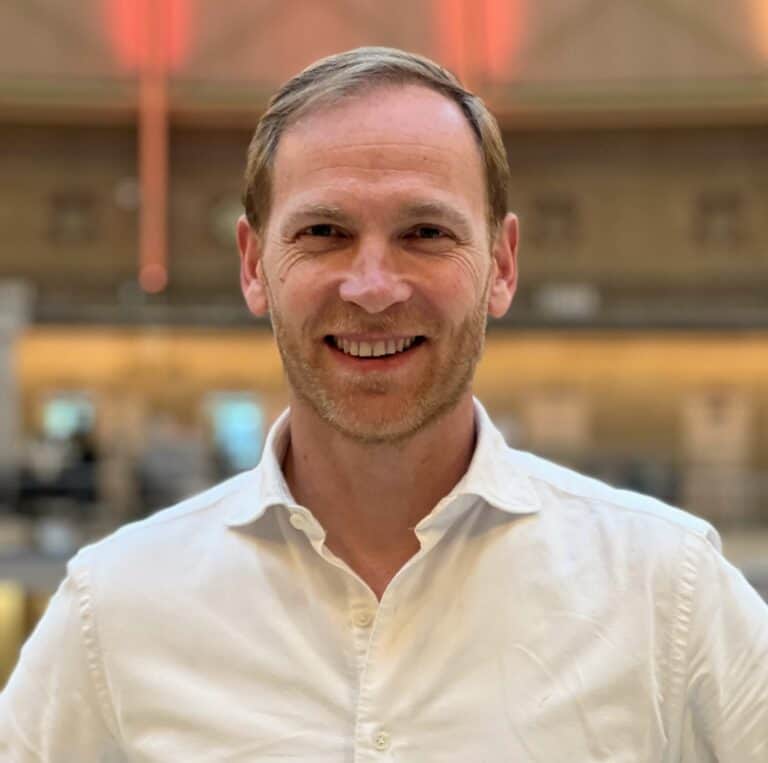On March 5, the second edition of the Acceleration Program Future-proof Construction started. What can be learned here for the innovative startups and scale-ups in the construction and infrastructure sector that the program focuses on? We asked venture builder Jorn Eiting van Liempt of ROM InWest, and one of the companies (Pretty Plastic) that he supervises as a supervisor.
“The sustainable living environment that the government is pursuing and for which increasingly higher demands are being made, is largely dependent on sustainable construction. In order to give this an extra boost, the national program Future-proof Living Environment, together with the ROMs, initiated the Acceleration Program Future-proof Construction (ATB). The target group consists of start-ups and scale-ups that are active in the construction and infrastructure sector with innovations in the field of biobased and/or circular construction or data-driven management and maintenance of infrastructure.”
Customer-oriented focus
Jorn, who is hosting this second edition of the ATB who supports a total of four companies (Pretty Plastic, Boom Builds, Humade.nl and Echo Acoustic), says that a customer-oriented focus is central to the program. “Many entrepreneurs present their technological innovation as the solution to a problem, without there being a validated problem underlying it. They mainly base themselves on confirmation bias in the form of fans and figures that 'prove' them right. We help them reduce the risk by taking a step back and investigating whether their innovation really is a solution to a market demand - in order to arrive at a product that can also be directly integrated into practice. In my opinion, during this program you actually do the work that you already have to do to make your company a success.”
Problem solution & product market fits
For companies that have already taken this first hurdle but are still looking for a (better) product market fit, the big question is whether current users would also use their product structurally and make repeat purchases. Jorn: “A viable model requires much more than a group of fans making a first purchase. The decisive question is whether your product becomes a structural solution. Metrics exist for that 'oil stain effect' and with that you can have a more solid foundation before you start scaling up.”
Out of the inventors bubble
Jorn says he enjoys being a supervisor a lot. “I can draw a lot from my own entrepreneurial experiences with similar companies that I have set up. During the interviews with their target group that I have participants do, I liked it when completely new insights arise back and forth. With the entrepreneurs, you see that they completely come out of their inventor bubble for a while and go looking for a solution that really fits in with practice. That is crucial, because only with such a solution can you grow consistently. And consistent growth is the best way to make a lasting impact.”
Pretty Plastic: “With your nose to the facts”
Amsterdam-based Pretty Plastic is one of the companies that Jorn is coaching during the ATB. CEO Hajo Reinders says that he was invited by ROM InWest to participate in the program. “What appealed to me was that this program is specifically focused on building materials. The fact that the start of the program also coincided with the start of a new Account Executive with us, I saw as an ideal opportunity for him to familiarize himself with the essential challenges for our company and our market. And in general, I think you are never too old to learn.”
Recognizable challenges
“We have been on the road with the ATB for a few weeks now and our impression is very good. The affinity of all those involved with the construction world is nice, because it means we keep seeing and hearing challenges that we recognize ourselves in. In contrast to other programs – which are often rather non-committal in nature – you are also really encouraged to do things yourself. You learn how to avoid making assumptions and which steps are crucial to be successful as a startup. Think of building a partner network. The program really makes you face the facts.”
First the customer Hajo notices that he can now apply many lessons from the ATB in his daily practice. “In conversations with and when approaching potential customers, for example, we promote our product much less primarily. That comes later. We first put ourselves completely in the shoes of the customer and their challenge. What are they struggling with? That is the starting point for serving them. Via this reverse 'route' we noticeably arrive at a much better proposition.”
Advice: make time
“Be aware that the program takes up quite a bit of time,” Hajo advises other candidate participants. “To give you an idea: one of the components is conducting fifty interviews per target group to gather market information. That all has to fit into your schedule, in addition to the challenges that are already running. My advice: make enough time available so that you can do the entire program well. Because our new colleague is now following the ATB dedicated to us, we are getting the most out of it.”


